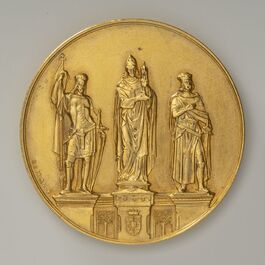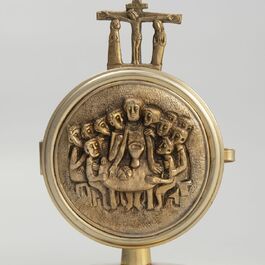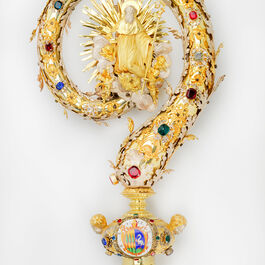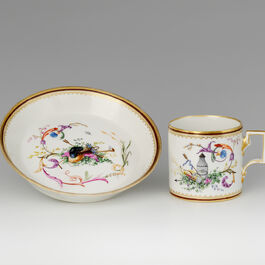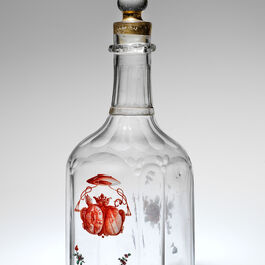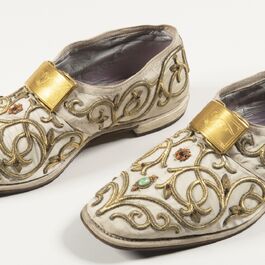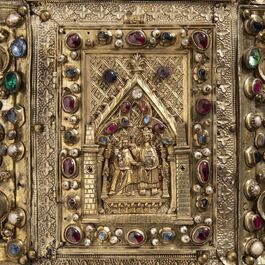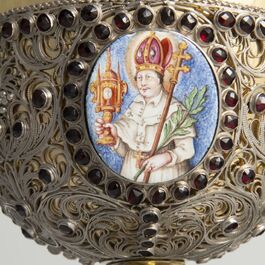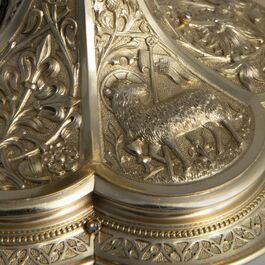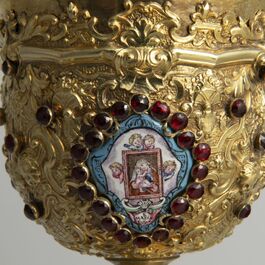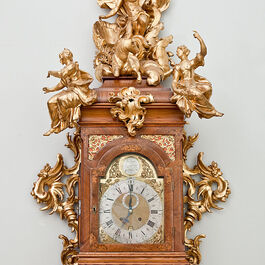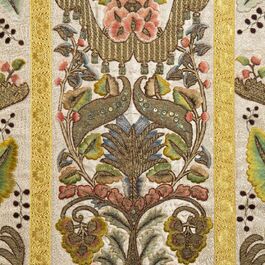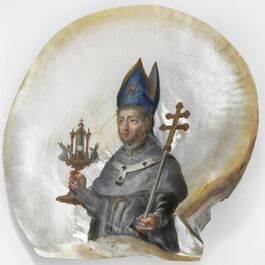Characteristics of the Collection of Artistic Crafts
The collection contains several dozen pieces of historical furniture, including several historical clocks. From the formerly rich collection of glass and ceramics, approximately three hundred items were returned to the monastery after restitution. There is also a collection of two hundred and fifty pieces of pewter tableware, used in the monks' refectories.
The oldest goldsmith items are two large reliquary plates from the turn of the 13th and 14th centuries from the Benedictine monastery at St. George's at Prague Castle. The creation of most other precious metal items falls mainly into the 17th to 19th centuries, with the majority being the work of Prague or Augsburg goldsmiths.
The textile sub-collection exhibits were intended for liturgical purposes, primarily as priestly vestments or for altar decorations, festivals, and processions. The collection includes Baroque sets made, among others, in the embroidery workshops of the Doksany Premonstratensian monastery, as well as imported textiles, mostly of French and Italian origin from the 17th to 18th centuries. Numerous textile products from the late 19th and early 20th centuries were made in the workshops of the Christian Academy. The collection also includes examples of historical abbatial pontificals. After 1990, private collections of two patrons - JUDr. Jaromír Stach (1948–2011) and Jaroslava Ossendorfová (1914–2005) - were added to the restituted applied art items.




